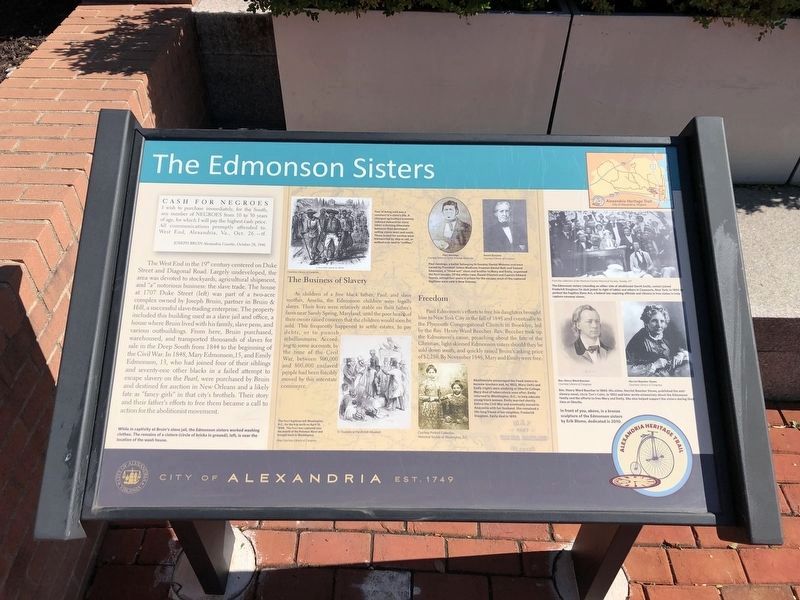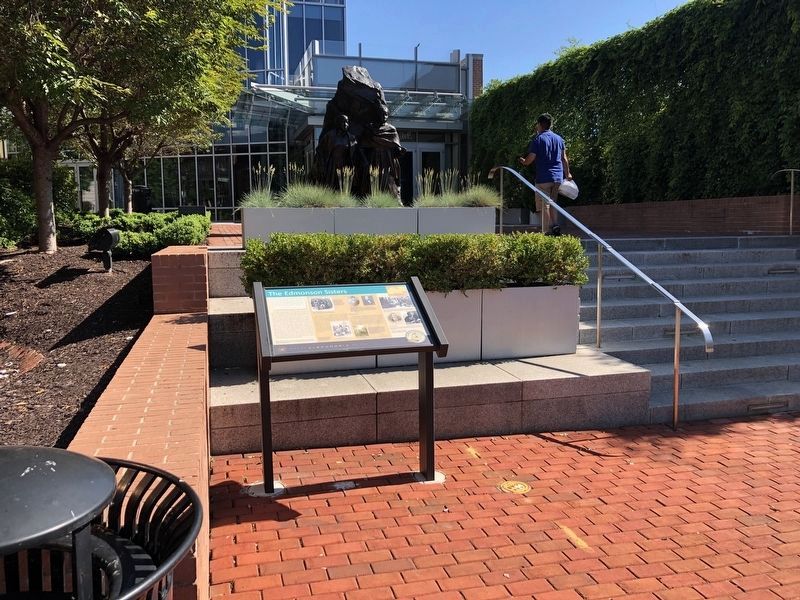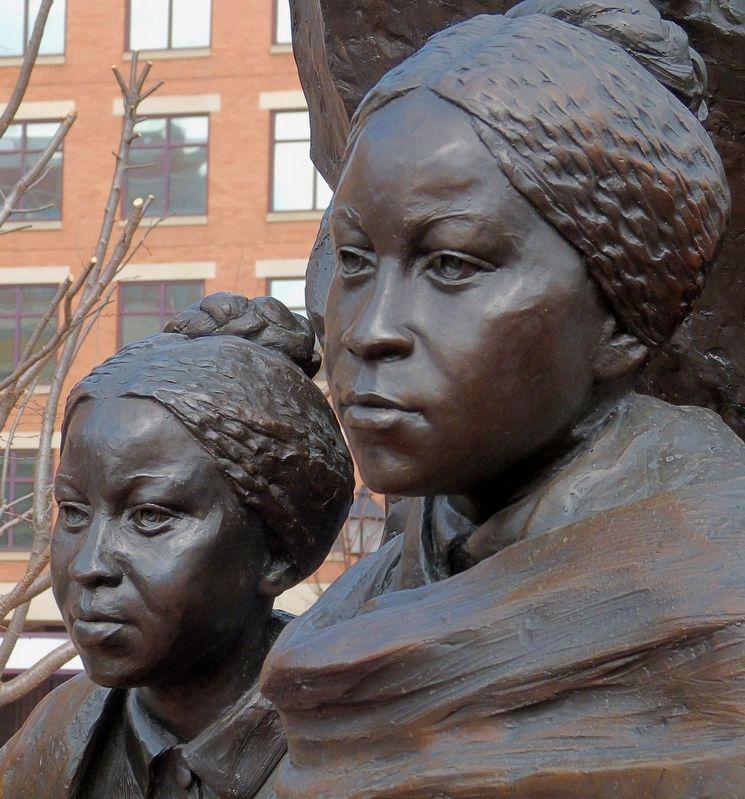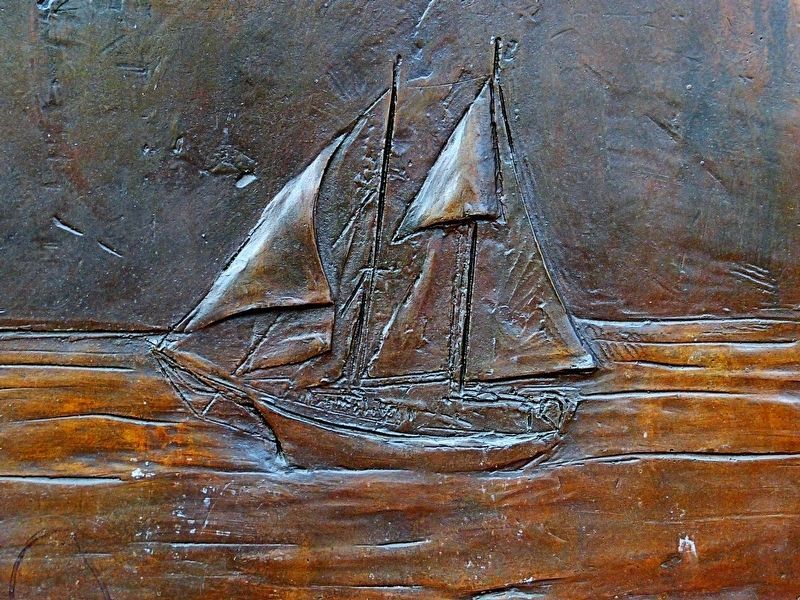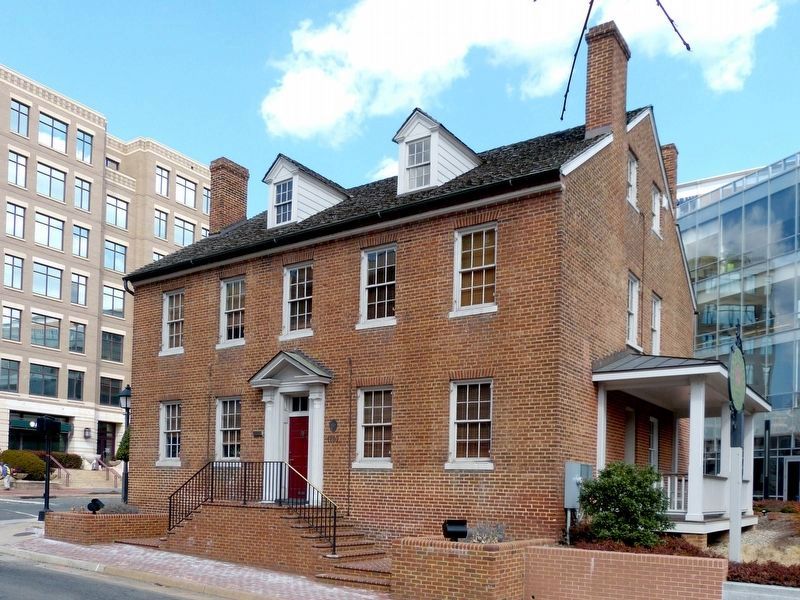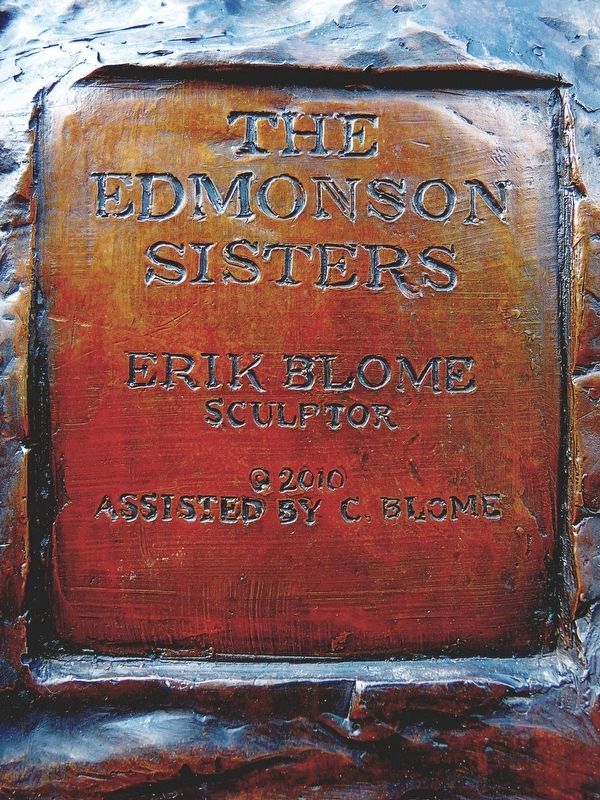Old Town in Alexandria, Virginia — The American South (Mid-Atlantic)
The Edmonson Sisters
Alexandria Heritage Trail
— City of Alexandria, est. 1749 —
The West End in the 19th century centered on Duke Street and Diagonal Road. Large undeveloped, the area was devoted to stockyards, agricultural shipment, and "a" notorious business: the slave trade. The house at 1707 Duke Street (left) was part of a two-acre complex owned by Joseph Bruin, partner in Bruin & Hill, a successful slave-trading enterprise. The property included this building used as a slave jail and office, a house where Bruin lived with his family, slave pens, and various outbuildings. From here, Bruin purchased, warehoused, and transported thousands of slaves for sale in the Deep South from 1844 to the beginning of the Civil War. In 1848, Mary Edmonson, 15, and Emily Edmonson, 13, who had joined four of their siblings and seventy-one other blacks in a failed attempt to escape slavery on the Pearl, were purchased by Bruin and destined for auction in New Orleans and a likely fate as "fancy girls" in that city's brothels. Their story and their father's efforts to free them became a call to action for the abolitionist movement.
The Business of Slavery
As children of a free black father, Paul, and slave mother, Amelia, the Edmonson children were legally slaves. Their lives were relatively stable on their father's farm near Sandy Spring, Maryland, until the poor health of their owner raised concern that the children would soon be sold. This frequently happened to settle estates, to pay debts, or to punish rebelliousness. According to some accounts, by the time of the Civil War, between 500,000 and 800,000 enslaved people had been forcibly moved by this interstate commerce.
Freedom
Paul Edmonson's efforts to free his daughters brought him to New York City in the fall of 1848 and eventually to the Plymouth Congregational Church in Brooklyn, led by the Rev. Henry Ward Beecher. Rev. Beecher took up the Edmonson's cause, preaching about the fate of the Christian, light-skinned Edmonson sisters should they be sold down south, and quickly raised Bruin's asking price of $2,250. By November 1848, Mary and Emily were free.
[Captions and asides:]
While in captivity at Bruin's slave jail, the Edmonson sisters worked washing clothes. The remains of a cisterns (circle of bricks in the ground), left, is near the location of the wash house.
Fear of being sold was a constant in a slave's life. A changed agriculture economy reduced demand for slave labor; a thriving interstate business then developed selling slaves west and south. Those bound for auction were transported by ship or rail, or walked over land in "coffles."
Paul Jennings, a butler belonging to Senator Daniel Webster and once owned by President
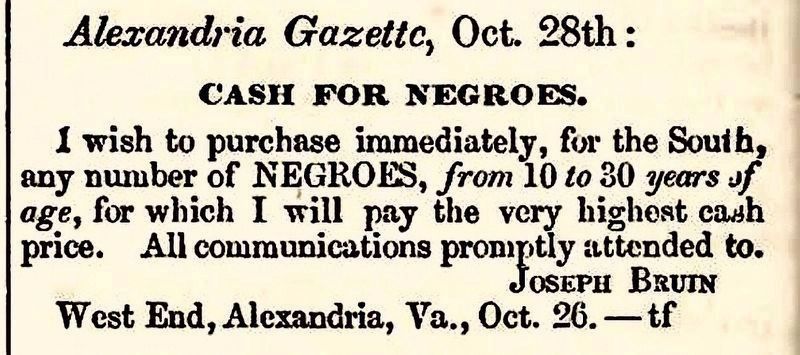
Photographed By WikiSource
2. Cash For Negroes
I wish to purchase immediately, for the South, any number of NEGROES, from 10 to 30 years of age, for which I will pay the very highest cash price. All communications promptly attended to.
JOSEPH BRUIN
West End, Alexandria, Va., Oct. 26. —tf
Alexandria Gazette, October 28, 1846.
From Key to Uncle Tom's Cabin, 1853, by Harriet Beecher Stowe, Page 144.
JOSEPH BRUIN
West End, Alexandria, Va., Oct. 26. —tf
Alexandria Gazette, October 28, 1846.
From Key to Uncle Tom's Cabin, 1853, by Harriet Beecher Stowe, Page 144.
The Pearl fugitives left Washington, D.C., for the trip north on April 15, 1846. The Pearl was captured near the mouth of the Potomac River and brought back to Washington.
Abolitionists encouraged the freed sisters to become teachers and, by 1853, Mary (left) and Emily (right) were studying at Oberlin College. Mary died of tuberculosis soon after; Emily returned to Washington, D.C., to help educate young black women. Emily married shortly before the Civil War and eventually moved to Anacostia with her husband. She remained a life-long friend of her neighbor, Frederick Douglass. Emily died in 1895.
The Edmonson sisters (standing on either side of abolitionist Gerrit Smith, center) joined Frederick Douglass (in dark jacket to right of table) and others in Cazenovia, New York, in 1850 to protest the Fugitive Slave Act, a federal law requiring officials and citizens in free states to help capture runaway slaves.
Rev. Henry Ward Beecher in 1860. His sister, Harriet Beecher Stowe, published the anti-slavery novel, Uncle Tom's
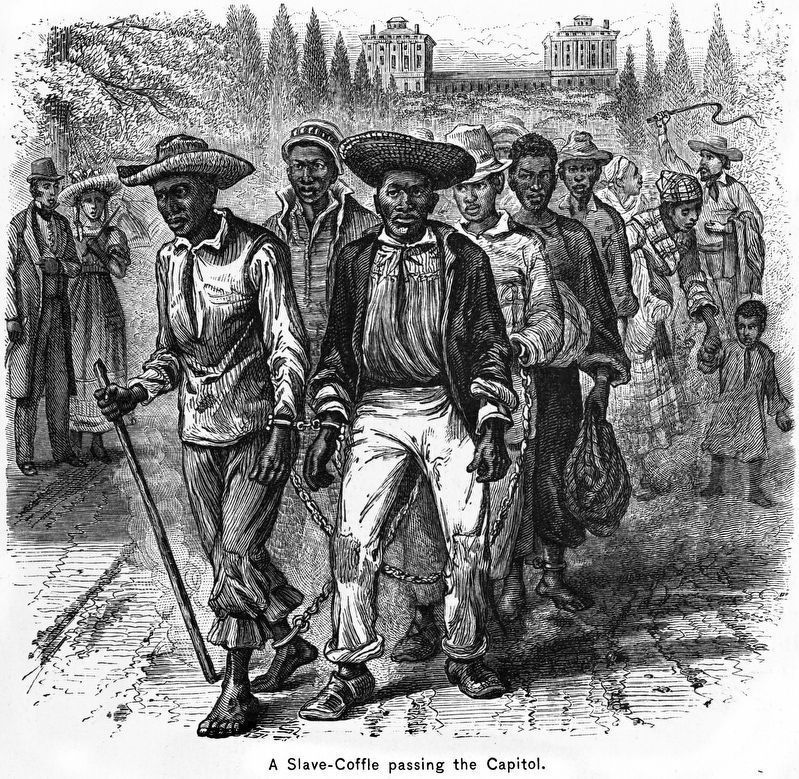
Library of Congress
3. A Slave-Coffle passing the Capitol
Fear of being sold was a constant in a slave's life. A changed agriculture economy reduced demand for slave
labor; a thriving interstate business then developed selling slaves west and south. Those bound for auction were transported by ship or rail, or walked over land in “coffles.”
Illustration from A Popular History of the United States, Scribner, Armstrong, and Company, 1876-1881.
Illustration from A Popular History of the United States, Scribner, Armstrong, and Company, 1876-1881.
In front of you, above, is a bronze sculpture of the Edmonson sisters by Erik Blome, dedicated in 2010.
Erected by City of Alexandria, Virginia.
Topics and series. This historical marker is listed in these topic lists: Abolition & Underground RR • African Americans • Industry & Commerce • Waterways & Vessels • Women. In addition, it is included in the Former U.S. Presidents: #04 James Madison, and the Virginia, The City of Alexandria series lists. A significant historical date for this entry is April 15, 1846.
Location. 38° 48.267′ N, 77° 3.574′ W. Marker is in Alexandria, Virginia. It is in Old Town. Marker is at the intersection of Duke Street (Virginia Route 236) and Holland Lane, on the right when traveling west on Duke Street. Touch for map. Marker is at or near this postal address: 1701 Duke St, Alexandria VA 22314, United States of America. Touch for directions.
Other nearby markers. At least 8 other markers are within walking distance of this marker. The Duke Street Tanyard (about 500 feet away, measured in a direct line); African American Heritage Memorial (about 600 feet away); The West End (about 600 feet away); Hooff's Run Bridge
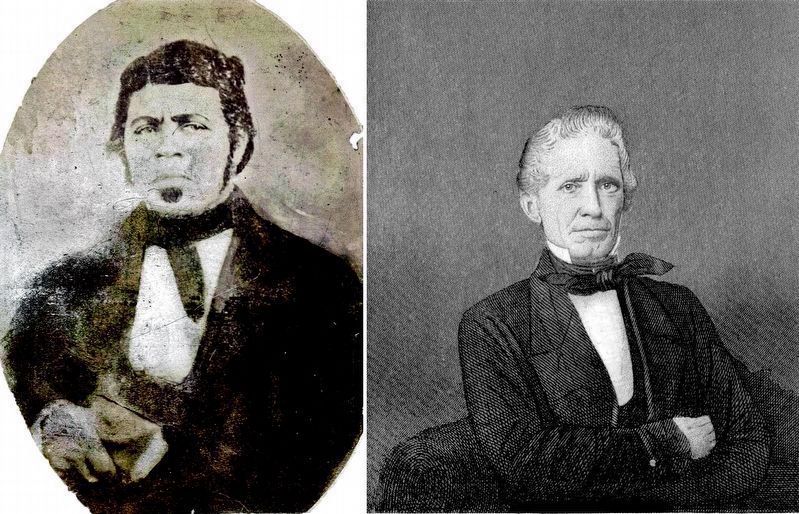
4. Paul Jennings & Daniel Drayton
Paul Jennings, a butler belonging to Senator Daniel Webster and once owned by President James Madison; freeman Daniel Bell; and Samuel Edmonston, a "hired-out" slave and brother to Mary and Emily, organized the Pearl escape. Of the white crew, Daniel Drayton and Captain Edward Sayres, served four years in prison for the escape; most of the captured fugitives were sold in New Orleans.
Daniel Drayton from Personal Memoir, 1855 (Internet Archive). Paul Jennings by E. C. Perry Photograph Company (Library of Congress)
Daniel Drayton from Personal Memoir, 1855 (Internet Archive). Paul Jennings by E. C. Perry Photograph Company (Library of Congress)
Additional keywords. human trafficking, sex work, prostitution
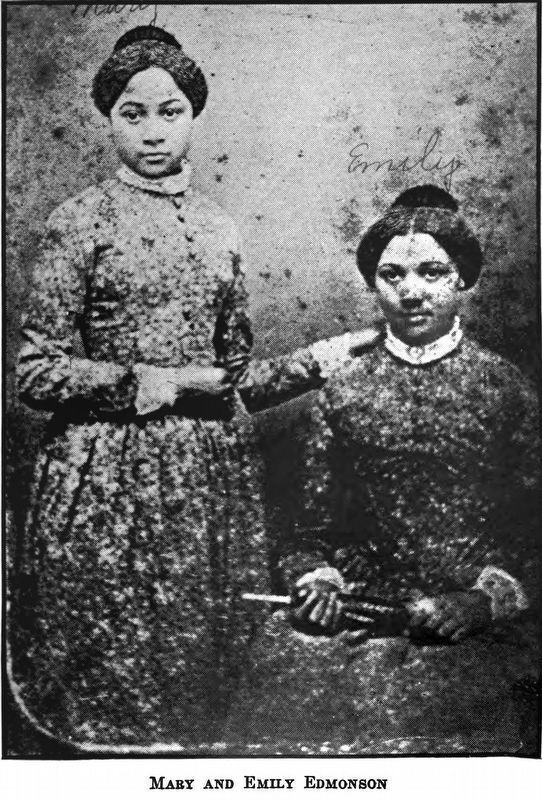
Photographed By Hathi Trust
5. Mary and Emily Edmonson
Abolitionists encouraged the freed sisters to become teachers and, by 1853, Mary (left) and Emily (right) were studying at Oberlin College. Mary died of tuberculosis soon after; Emily returned to Washington, D.C., to help educate young black women. Emily married shortly before the Civil War and eventually moved to Anacostia with her husband. She remained a life-long friend of her neighbor, Frederick Douglass. Emily died in 1895.
From Fugitives of the Pearl, by John H. Paynter, c.1930, following Page 64.
From Fugitives of the Pearl, by John H. Paynter, c.1930, following Page 64.
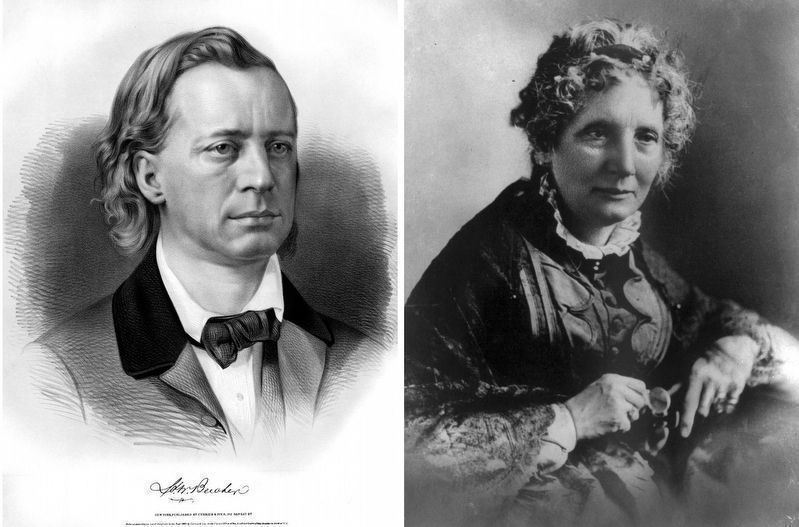
Library of Congress
6. Henry Ward Beecher & Harriet Beecher Stowe
Rev. Henry Ward Beecher in 1860. His sister, Harriet Beecher Stowe, published the anti-slavery novel, Uncle Tom's Cabin, in 1852 and later wrote extensively about the Edmonson family and the efforts to free Mary and Emily. She also helped support the sisters during their time at Oberlin.
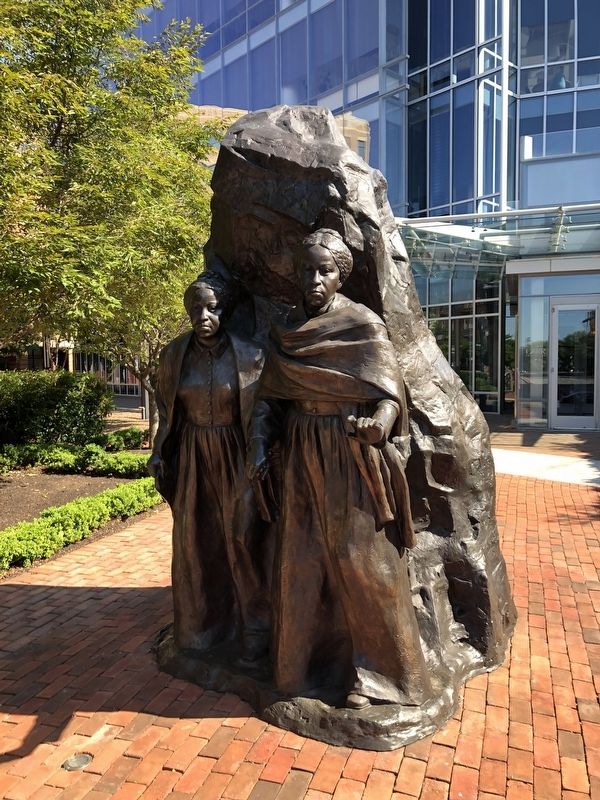
Photographed By Devry Becker Jones (CC0), June 7, 2020
8. The bronze sculpture of the Edmonson Sisters
On the back is an inscription reading:
PEARL
Credits. This page was last revised on May 25, 2023. It was originally submitted on June 7, 2020, by Devry Becker Jones of Washington, District of Columbia. This page has been viewed 906 times since then and 81 times this year. Photos: 1. submitted on June 7, 2020, by Devry Becker Jones of Washington, District of Columbia. 2, 3. submitted on April 12, 2021, by Allen C. Browne of Silver Spring, Maryland. 4. submitted on March 31, 2021, by Allen C. Browne of Silver Spring, Maryland. 5. submitted on March 30, 2021, by Allen C. Browne of Silver Spring, Maryland. 6. submitted on April 12, 2021, by Allen C. Browne of Silver Spring, Maryland. 7, 8. submitted on June 7, 2020, by Devry Becker Jones of Washington, District of Columbia. 9, 10, 11. submitted on March 29, 2021, by Allen C. Browne of Silver Spring, Maryland. 12. submitted on March 30, 2021, by Allen C. Browne of Silver Spring, Maryland.
